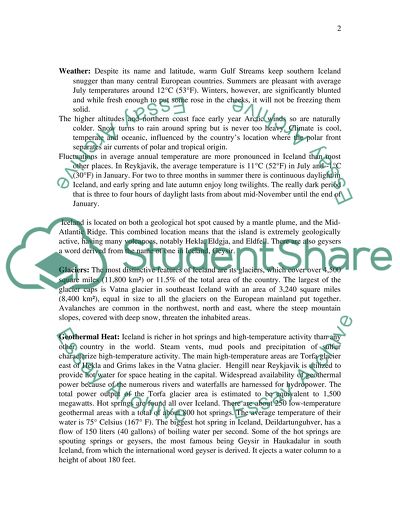Cite this document
(“The Country Overview of The Iceland Essay Example | Topics and Well Written Essays - 2500 words”, n.d.)
Retrieved from https://studentshare.org/geography/1501735-iceland
Retrieved from https://studentshare.org/geography/1501735-iceland
(The Country Overview of The Iceland Essay Example | Topics and Well Written Essays - 2500 Words)
https://studentshare.org/geography/1501735-iceland.
https://studentshare.org/geography/1501735-iceland.
“The Country Overview of The Iceland Essay Example | Topics and Well Written Essays - 2500 Words”, n.d. https://studentshare.org/geography/1501735-iceland.


